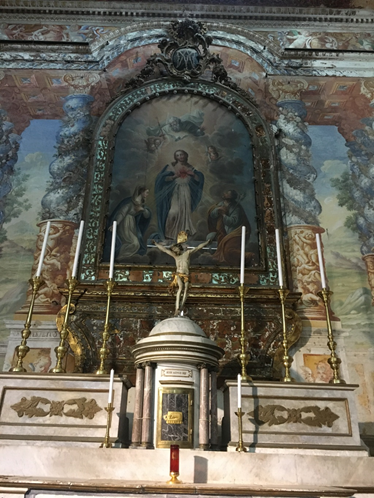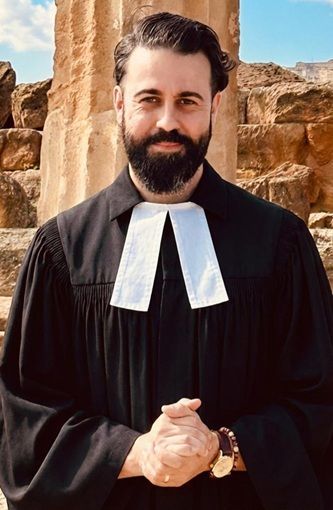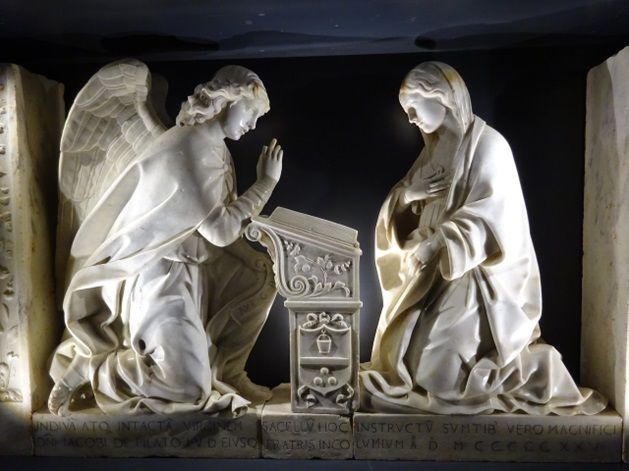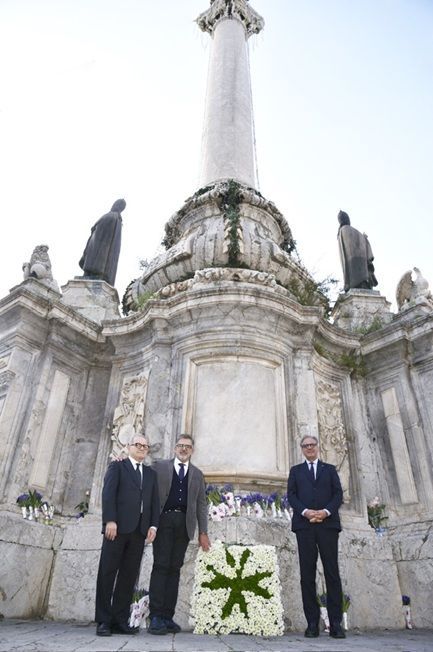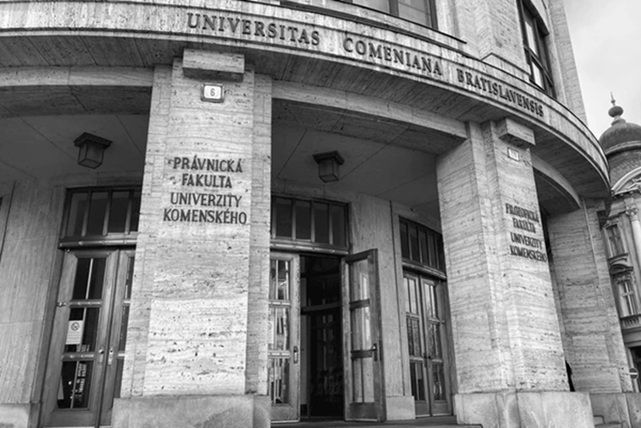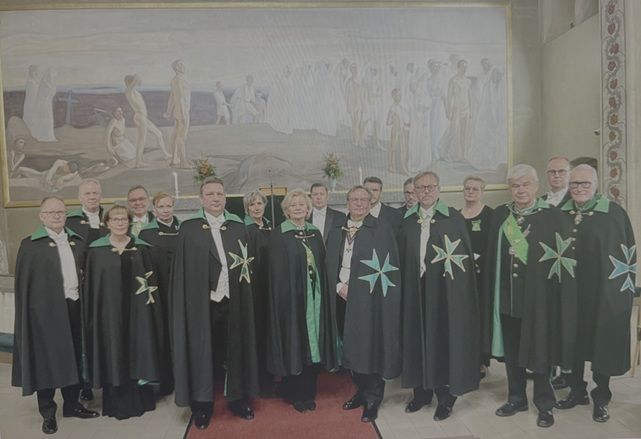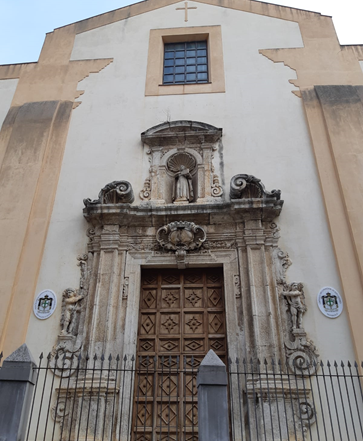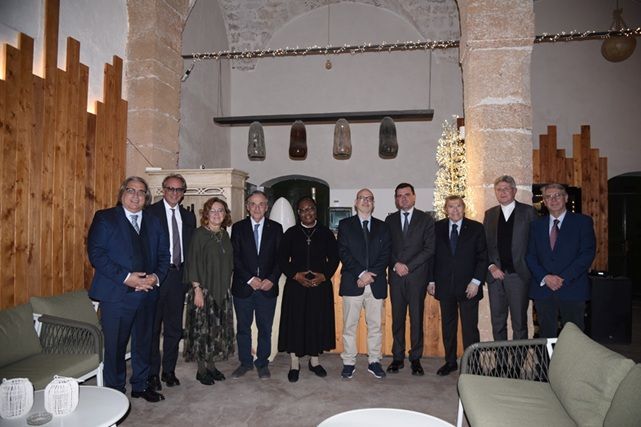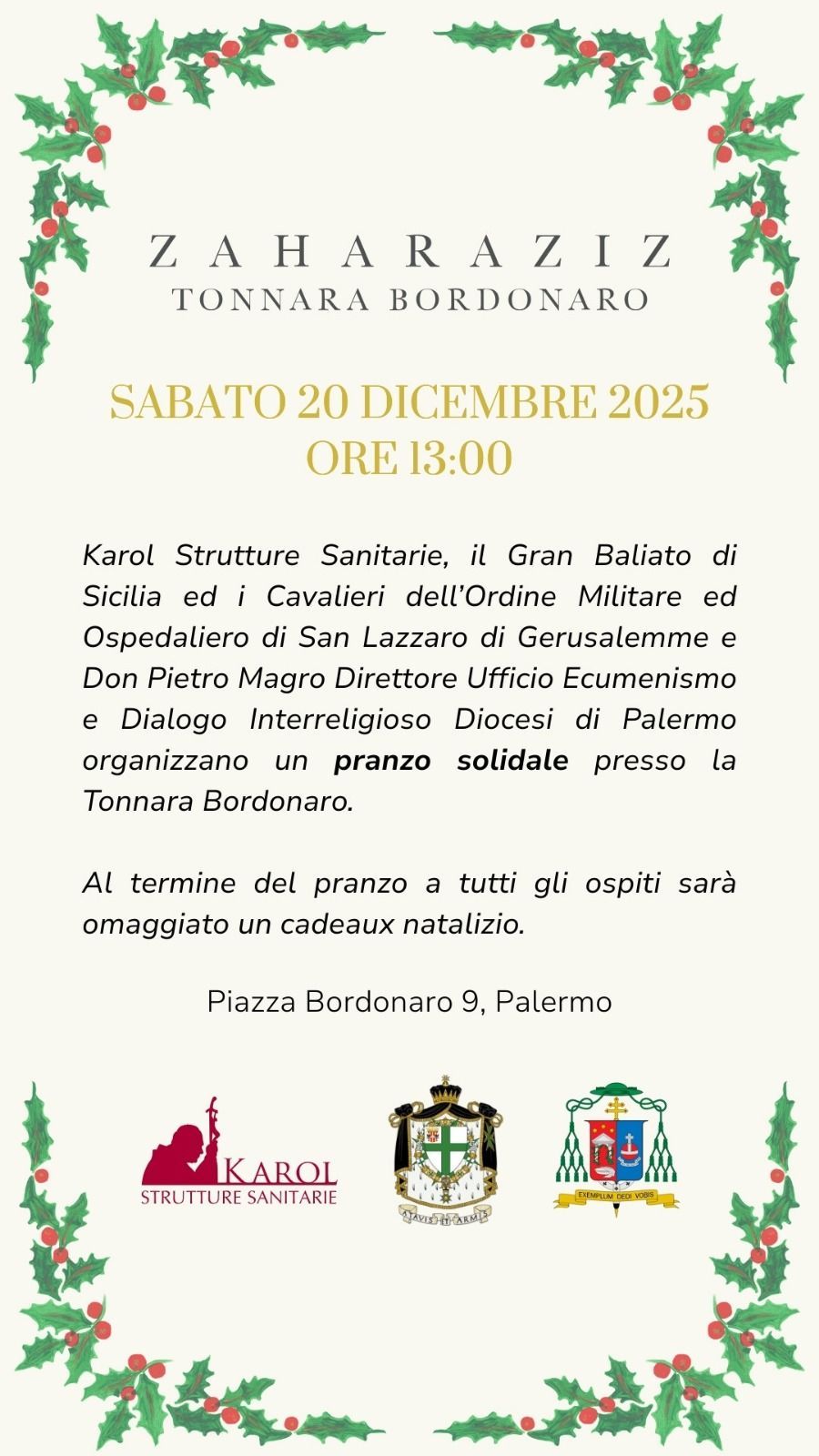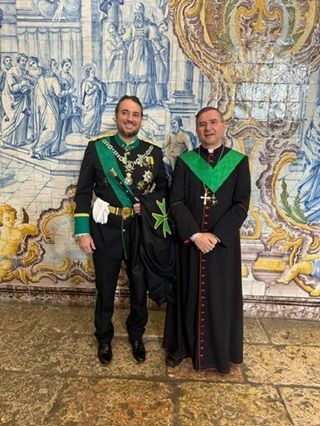SARA’ RESTAURATA LA TAVOLA DELL’ALTARE MAGGIORE DELLA CHIESA CAPITOLARE DEL SACRO CUORE
SARA’ RESTAURATA LA TAVOLA DELL’ALTARE MAGGIORE DELLA CHIESA CAPITOLARE DEL SACRO CUORE
(La tavola del Sacro Cuore, sec. XVI-XVII, Chiesa del Sacro Cuore, Monreale)
La grande tavola centinata raffigurante il Sacro Cuore di Gesù, conservata a Monreale nella chiesa Capitolare del Sacro Cuore, attuale sede del Gran Baliato di Sicilia dell’Ordine Equestre e Militare di San Lazzaro di Gerusalemme, tornerà presto a risplendere grazie ad un delicato intervento di restauro finanziato dalla Regione Siciliana e che ha visto l’impegno operativo del Gran Baliato di Sicilia e del Venerando Capitolo dei Cavalieri di San lazzaro in Monreale.
La soprintendenza ai Beni culturali di Palermo ha già effettuato la consegna dei lavori all’impresa di restauro, la palermitana Loris Panzavecchia. L’intervento sulla pala d’altare e sulla maestosa cornice intagliata, che si concluderà in 180 giorni, è coordinato dall’arch. Maria Serena Tusa e diretto da Sandra Proto e Mauro Sebastianelli della Soprintendenza.
L’opera, databile tra la fine del XVI e gli inizi del XVII secolo, mostra una composizione ancora tardo manieristica che risente della produzione artistica romana di Scipione Pulzone e dei Carracci. Il dipinto è inserito in una cornice lignea a cassetta intagliata e dorata mediante la tecnica della meccatura e arricchita, nella fascia interna, da lastre in vetro dipinte a motivi vegetali vincolate al supporto tramite adesivi organici. La struttura è inoltre caratterizzata da un ricco intaglio decorativo dorato posto sulla parte sommitale che riporta il simbolo mariano e da una struttura basamentale ad urna, che svolge anche la funzione di sostegno dell’intero manufatto.
Durante i primi mesi di restauro il manufatto sarà sottoposto a un’accurata campagna fotografica preliminare con luce normale e ultravioletta e a indagini multispettrali non invasive. Tali indagini contribuiranno a caratterizzare le tecniche esecutive e lo stato di conservazione dei molteplici materiali presenti. L’intervento seguirà il criterio della compatibilità e della reversibilità degli interventi, nel rispetto della valenza storica e artistica del manufatto nonché del recupero estetico dello stesso.
THE HIGH ALTAR PANEL OF THE CAPITULAR CHURCH OF THE SACRED HEART WILL BE RESTORED
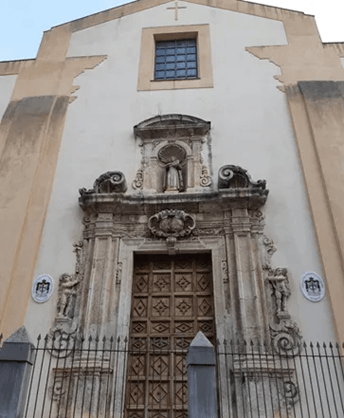
(The entrance portal of the Sacred Heart Church)
The large ribbed panel depicting the Sacred Heart of Jesus, kept in Monreale in the Capitular Church of the Sacred Heart, the current seat of the Grand Bailiwick of Sicily of the Equestrian and Military Order of St. Lazarus of Jerusalem, will soon be resplendent again thanks to a delicate restoration project financed by the Sicilian Region and involving the Grand Bailiwick of Sicily and the Venerable Chapter of the Knights of St. Lazarus in Monreale.
The Palermo Superintendence of Cultural Assets has already handed over the work to the restoration company Loris Panzavecchia from Palermo. The work on the altarpiece and the majestic carved frame, which will be completed in 180 days, is coordinated by arch. Maria Serena Tusa and directed by Sandra Proto and Mauro Sebastianelli of the Superintendence.
The work, which can be dated to between the end of the 16th and the beginning of the 17th century, shows a composition that is still late Mannerist and influenced by the Roman artistic production of Scipione Pulzone and the Carraccis. The painting is set in a wooden box frame, carved and gilded using the mechanization technique and enriched in the inner band by glass plates painted with plant motifs bound to the support with organic adhesives. The structure is also characterised by a rich gilded decorative carving at the top bearing the Marian symbol and by an urn-like base structure, which also acts as a support for the entire artefact.
During the first months of the restoration, the artefact will be subjected to a thorough preliminary photographic campaign using normal and ultraviolet light and non-invasive multispectral surveys. These investigations will help to characterise the techniques used and the state of conservation of the many materials present. The intervention will follow the criteria of compatibility and reversibility of the interventions, respecting the historical and artistic value of the artefact as well as the aesthetic recovery of the same.

